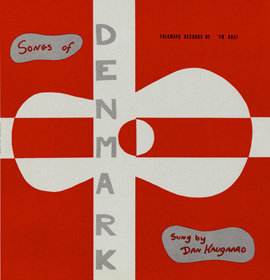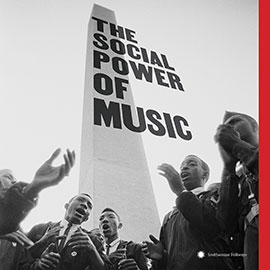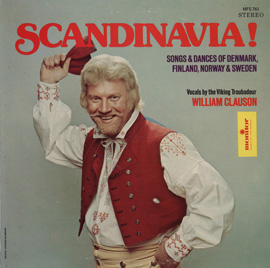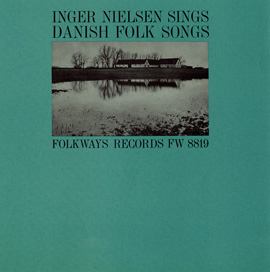Summary:
This lesson is designed to teach students about aural tradition and the Danish hero Peter “Tordenskjold” Wessel. Students will discuss tall tales and draw parallels to similar characters in American culture. When considering these heroes, they will collaborate and compose new verses. They will play, hand sign, and sing the melody of the song “Tordenskjold” and perform the traditional Danish “Song of Welcome.”
Suggested Grade Levels: 3–5
Country: Denmark
Region: Northern Europe
Culture Group: Danish
Genre: Danish traditional
Instruments:Pitched and un-pitched percussion, voice
Language: Danish
Co-curricular Areas: Social studies, English, dance
National Standards: 1, 2, 4, 6, 9
Prerequisites: Rhythm reading of whole, half, quarter, and eighth notes; understanding of solfege symbols and Curwen hand signs; proper mallet technique.
Materials:
- Maps of Nordic countries
- Photo of Peter Wessel
- Smithsonian Folkways Recordings tracks:
- “Tordenskjold” from Danish Folk Songs by Dan Haugaard
- “Paa Tave Bondes Ager (Hans Tavsen)” from Danish Folk Songs
- Orff un-pitched and barred instruments
- Paper and writing implement
- Background information about Peter Wesser, Hans Tavsen, and American heros such as George Washington, Davy Crockett, Johnny Appleseed, and Annie Oakley
Lesson Segments:
- Old Melodies (National Standards 1,6,9)
- Tall Tales (National Standards 1,4,9)
- Playing the Melody with New Lyrics (National Standards 1, 2)
- Danish Dance (National Standards 1, 2, 8, 9)
Lesson 1: Old Melodies
Students will learn the song “Tordenskjold.”
- Students listen to “Tordenskjold” as they enter the classroom.
- Teacher questions the students about the melody.
- What syllable does the song start with?
- What’s the syllable for the highest pitch in the melody?
- What pitch does the melody end with?
- Teacher lets the song play, and instructs the students to try to figure out which hand signs they will use for the melody.
- Teacher and students sing and hand sign the melody.
- The teacher discusses the origin of the melody as Danish, and how it was passed to other countries like Poland and the Czech Republic by way of oral tradition, or from word of mouth as opposed to being passed down through writing. Discuss how songs are passed through cultures.
Assessment: Teacher visually and aurally assesses the student’s ability to decipher which solfege syllables are utilized in the song as well as their ability to depict these syllables using their corresponding Curwen hand symbols. All of this should be done accurately and without the assistance of the teacher.
Lesson 2: Tall Tales
Students will create their own tall tale-inspired song lyrics.
- Teacher points out the lyric at the end of each verse in “Tordenskjold” and asks the students to identify it.
- The teacher shares information about the Danish war hero Peter Wesser and the legendary nature of this song about him.
- Teacher cites examples in our own culture of legends or “tall tales” about historic characters.
- Teacher breaks the students into groups of three and assigns a historic American hero for them to write about. George Washington, Davy Crockett, Johnny Appleseed and Annie Oakley are all good examples of American figures who have inspired ‘tall tales’.
- The students collaborate and create a short verse about the character that will fit the melody of the song. Teacher explains that myths can contain some truth with creative and unrealistic elaboration. Students are reminded to make sure that the words fit the rhythm of the melody.
- Each group shares their verse, and the class sings it with the melody.
Assessment: Teacher informally and aurally assesses the compositions of each group and monitors the work of each group as they are working to ensure involvement of all members. Teacher assesses the student’ ability to fit the words to the rhythms of the melody.
Lesson 3: Playing and Singing the Melody with New Lyrics
Students will perform “Tordenskjold.”
- After each student has received the score for “Tordenskjold,” they will write the lyrics for their new verse underneath the melody line.
- The class practices each percussion part by using “Ti Ta” syllables (for example, ‘ta’ may represent the quarter note beat, while ‘ti’ may represent the eighth note beat), then clapping, as a group. The barred part can be practiced with two fingers on the lap.
- One group at a time uses the instruments, while another group sings their lyrics, then groups rotate.
Assessment: The teacher observes the students’ practice of the rhythms, and aurally assesses the “ti-ta” practice. The teacher visually and aurally assesses each student as they perform the instrumental arrangement. The teacher is looking for how well the student-created lyrics and rhythms fit with the original folk song.
Lesson 4: Danish Dance
Students will perform a version of the traditional Danish “Song of Welcome.”
- Students form a circle, and teacher stands in the circle with them.
- Teacher instructs the students to “clap, clap, bow” two times.
- Teacher instructs the students to stomp their left foot, stomp the right, and then turn all the way around to the left in three steps.
- Put this together with the first section as the teacher gives anchor words like “clap” and “stomp.”
- The teacher then tells them to hold hands and circle to the right for eight counts. Then circle to the left for eight counts.
- The students perform the whole dance with the circle move at the end.
- The teacher explains that they will use a song about another Danish hero, Hans Tavsen, who was a religious pioneer who brought new ideas to Denmark.
- The teacher plays the song “Paa Tave Bondes Ager (Hans Tavsen)” and the students perform the dance with the music.
Assessment: The teacher visually assesses the students’ ability to perform the dance with steady beat.





